For today’s DIY project I’ll be making a rustic industrial style hemp rope chandelier. I’ve noticed this beautiful chandelier at the lighting store and I thought it would be a perfect addition to my living room.
It has a rectangular wooden base with 6 lights and 4 iron chains covered by hemp rope and iron hooks to hang it up.
It cost around 300$, so I decided to challenge myself and recreate it for less than 40$. I enjoyed the process of creating this chandelier because it was on my wish list for a while, and also I like to learn new stuff. This is my absolute favorite DIY project so far.
Here are the materials I used:
- Wood strip 6 cm wide, 3 cm thick (your local hardware store)
- Wood board 15 cm long; 10 cm wide, 2 cm thick
- Wood board 9 cm long; 6 cm wide, 3 cm thick
- Chain
- Hemp rope
- LED vintage filament light bulbs
- Light bulb sockets
- Canopy kit
- Black spray paint
- Wood glue
- Electrical tape
- Hooks
- Wood filler
- Hot glue sticks
Types of tools I used:
- Cordless drill
- Random orbit sander
- Dremel tool
- Soldering iron
- Mitre box with saw
- Glue gun
- Ruler
- F-Clamps
- 90 degree angle clamps
- Doweling jig
- Forstner bit
- Wire strippers
Disclosure: As an Amazon Associate I earn from qualifying purchases.
Related: How To Build A Wooden Desk Lamp | DIY Project
Step 1: Measuring and cutting the wood strip.
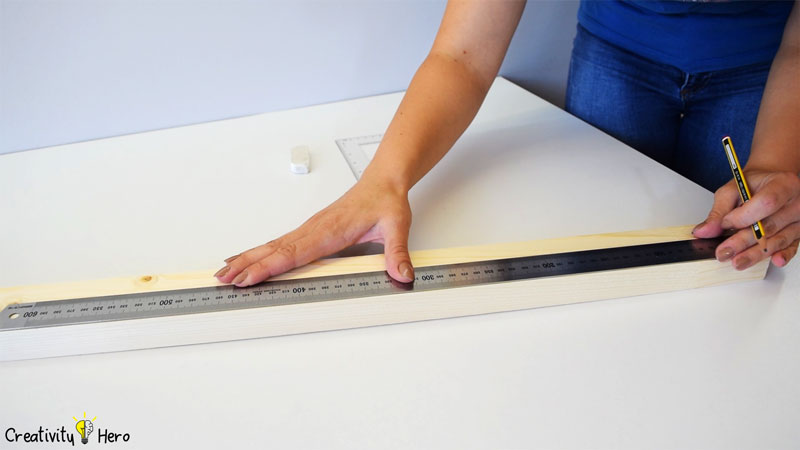
For this project I’m using 3 by 6 cm wood strip. The dimensions of the wooden frame are 55 x 35 cm, so I’ve measured and marked two pieces 55 cm long, and another two pieces 35 cm long.
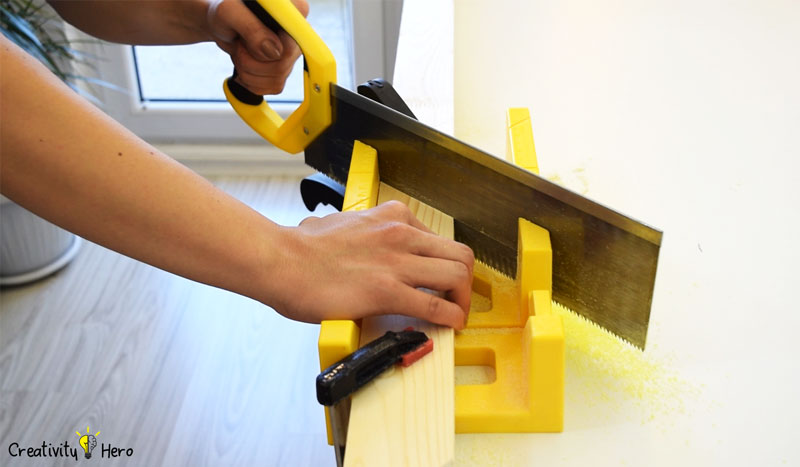
I’ve cut the wood pieces at a 45 degree angle with a handsaw and a miter box. The wood strip was pretty much thick and it took me some time until I finished with all the cuts.
Step 2: Joining the wooden pieces together.
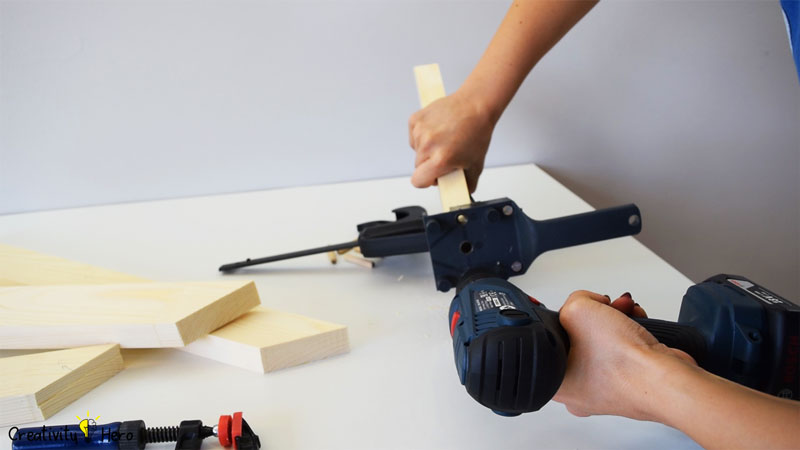
To hold this entire frame together I’m going to use dowels. I’ve marked the connection points on each corner, so that the dowels go through both pieces of wood.
Then, I drilled holes using a drill, a guide and some clamps for more precision.
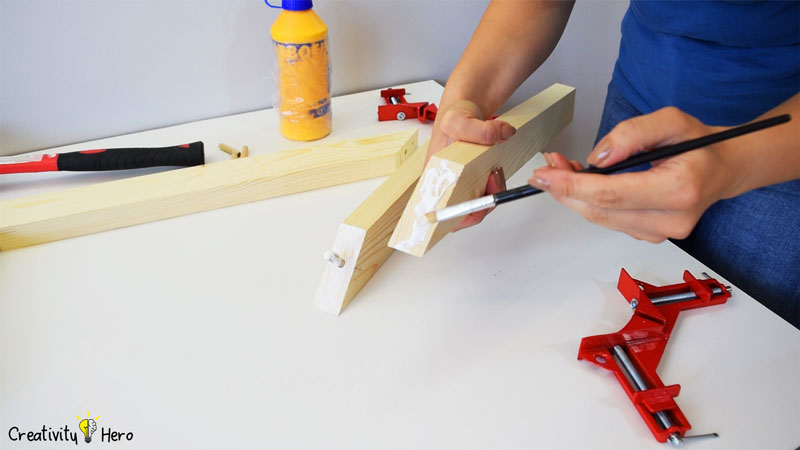
I’ve put one dowel per corner, because the chandelier weighs around 3 kg (which is less than 7 pounds). I applied wood glue and joined the pieces together.
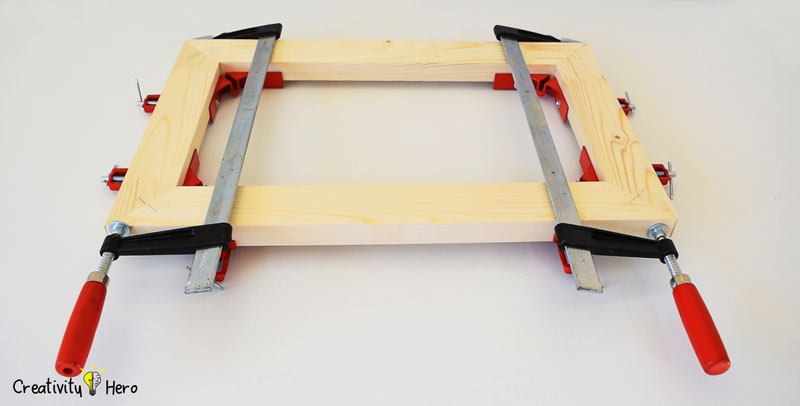
Then, I clamped down the frame with some corner clamps and F-clamps and left it to dry out.
Step 3: Applying a wood filler.
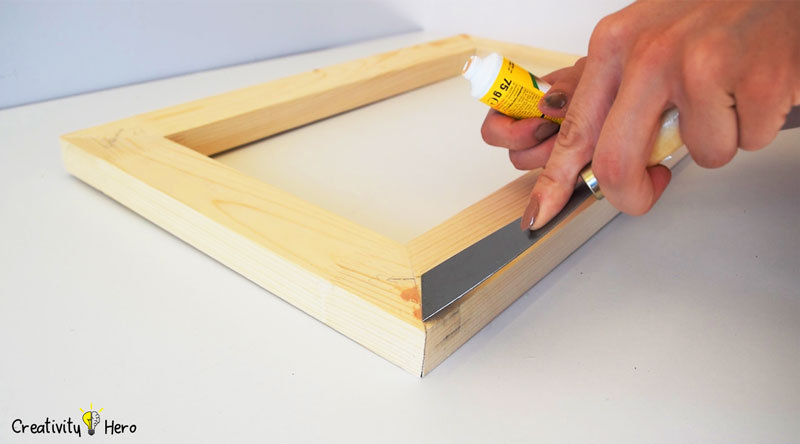
I applied a wood filler to fill in all the imperfections.
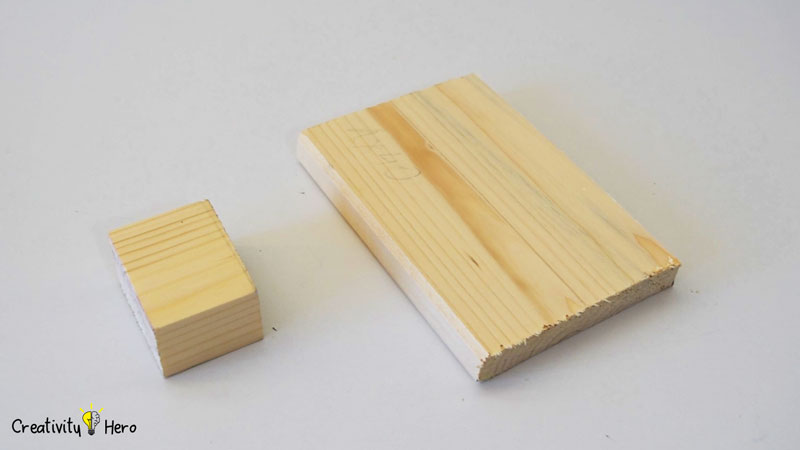
Also, I needed to cut another two pieces of wood with different sizes which will be used as a support for the chandelier. So, I’ve cut one piece 9 x 6 cm, 3 cm thick, and another piece 15 x 10 cm, 2 cm thick.
Step 4: Sanding the wooden frame.
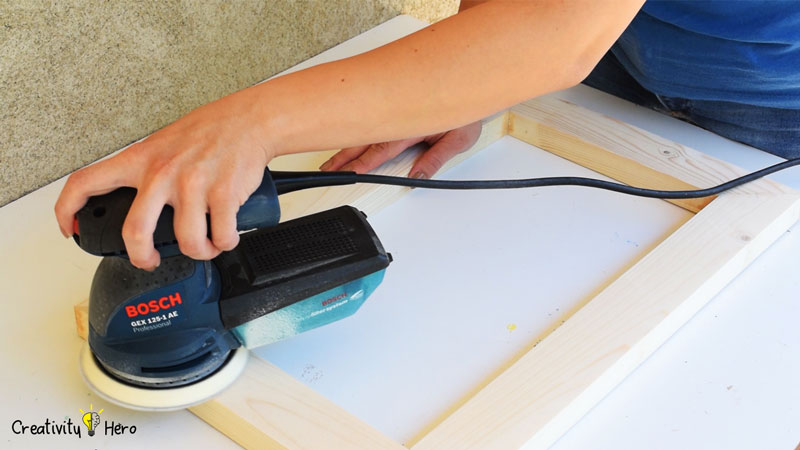
Once I’m done cutting and gluing, now I can move on to sanding. I was excited to try my new Random Orbit Sander, because in my previous projects I’ve spent so much time sanding by hand.
First, I’m just going to sand it down with 80 grit sandpaper, and then come back with 120, and then 220 to smooth the surface of the wood.
Step 5: Drilling holes for the light bulb sockets.
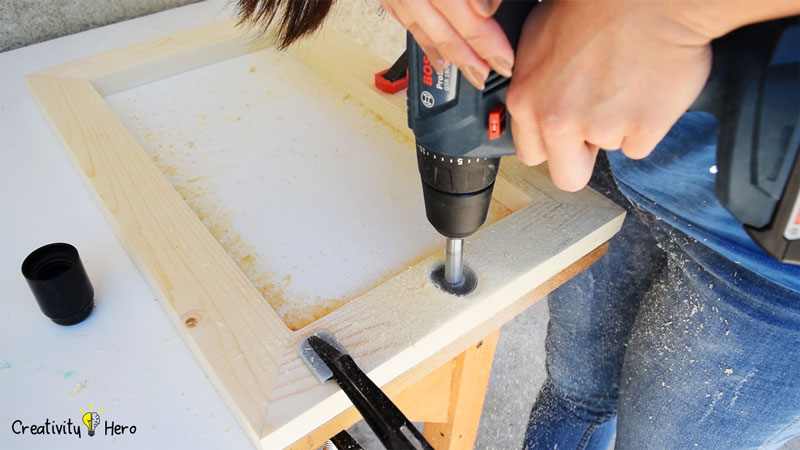
The next step is marking the center points for the location of the light bulb sockets because I would like them to line up. There are a total of 6 sockets.
I used a 35 mm forstner bit to countersink holes halfway through the wood, around 15 mm, which is enough to fit in the sockets.
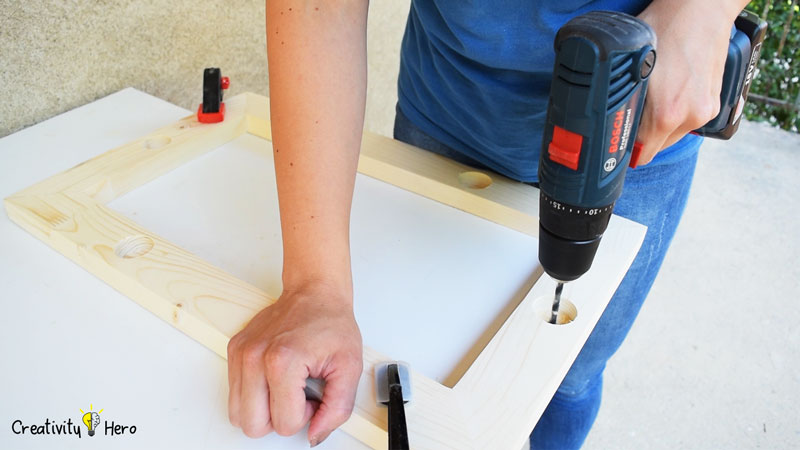
In the center of these holes I made additional holes with 6 mm bit all the way through the wood for the cord to pass through.
Step 6: Painting the wooden pieces.
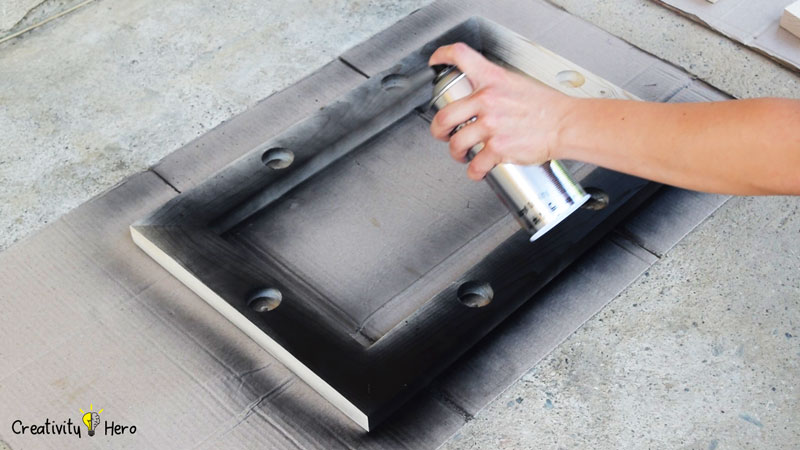
Now it is time for painting. I’m going to use black spray paint in order to make the chandelier look similar to the one that I saw in the lighting store. I applied 2 coats of spray paint and left it to dry out.
Step 7: Cutting the chain.
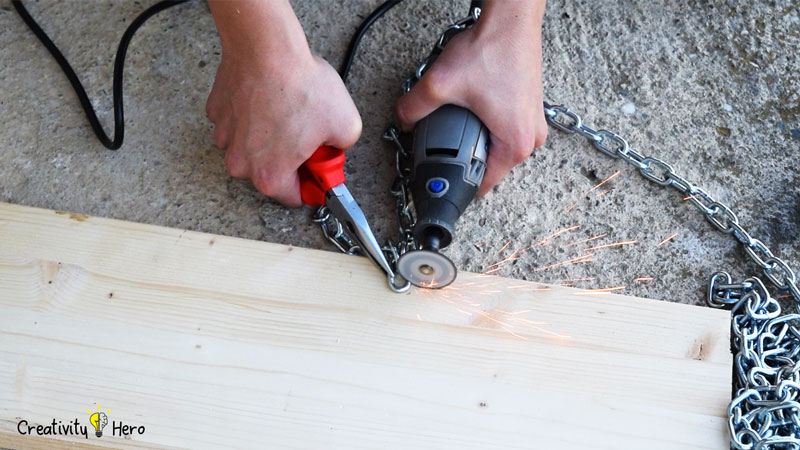
Next, I used Dremel tool to cut 4 equal lengths of chain. I cut these to 40 cm length. Also, I cut one small piece, 10 cm long.
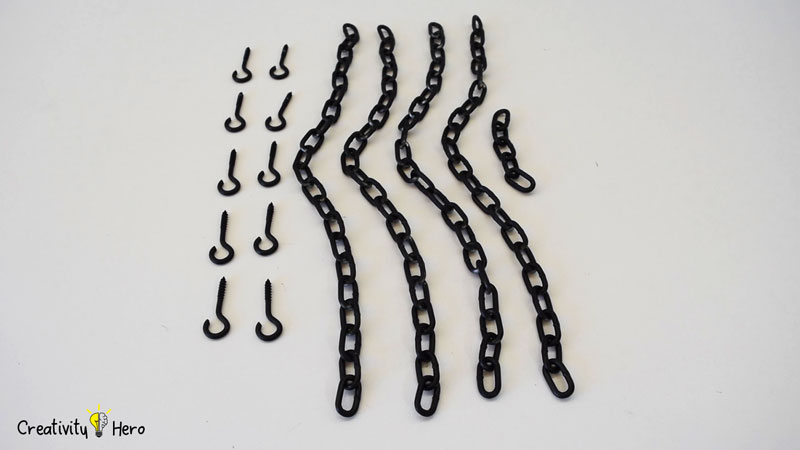
The chain and the hooks were silver, but I wanted black ones, so I painted them with a black spray paint. I actually liked how they turned out.
Step 8: Wrapping the chain with a hemp rope.
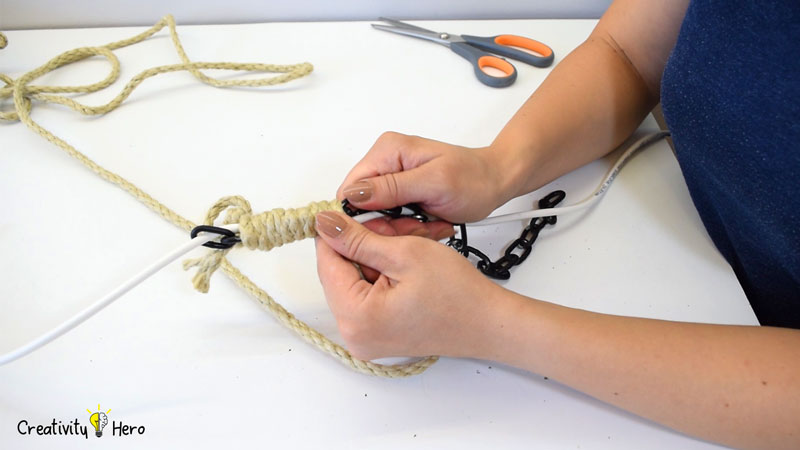
The last thing I need to do with the chain is to wrap it around with a hemp rope. I wrapped one of the chains together with a cable that will actually connect the cable from the sockets and the cable that comes from the ceiling.
I thought it would be much thicker from the rest three chains, but in the end I could barely see the difference between them.
Step 9: Securing the light bulb sockets into the holes.
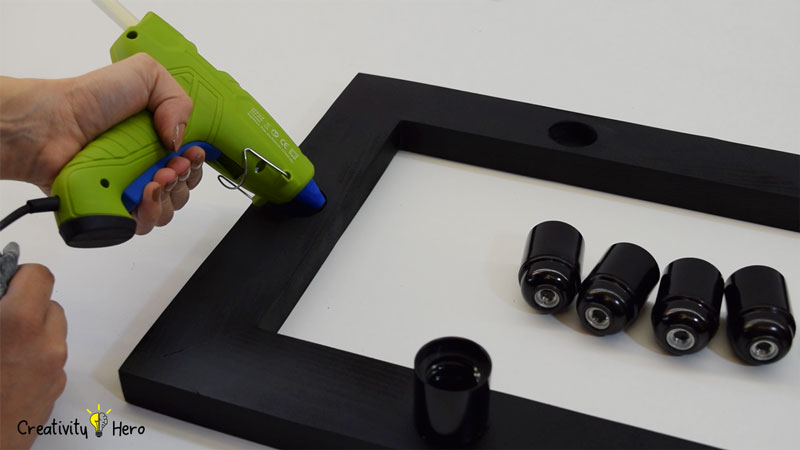
Now, let’s go back to the installation of the lights. I used a hot glue gun to secure the socket caps into the pre-drilled holes. As you can see, the caps are round, so I needed to apply large amount of hot glue so that they can stick better onto the wood.
Step 10: Wiring lights in parallel.
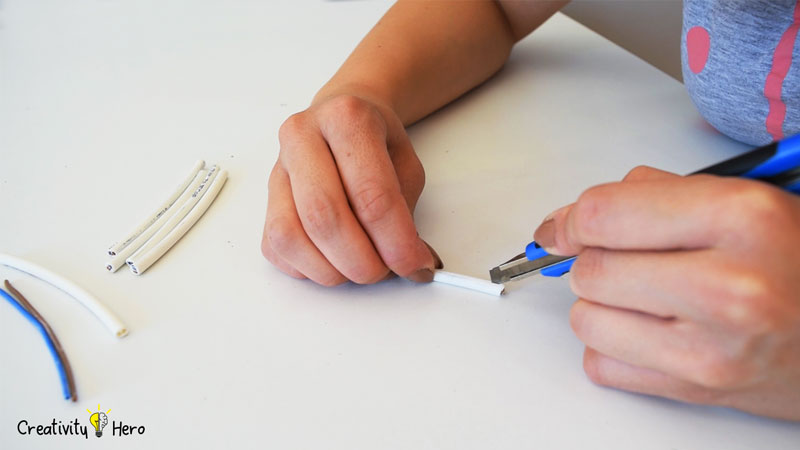
Next, I’ve cut six pieces of the cable, around 5 cm long and removed the jacket with a sharp cutter.
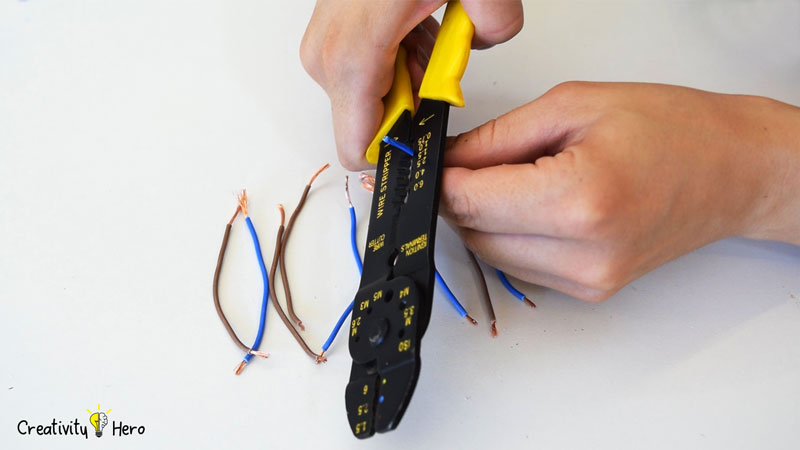
I’ve used my wire strippers to remove the insulation off of the ends of the wires. I’ll need half cm of the copper wires to show from one side, and at least one cm from the other side.
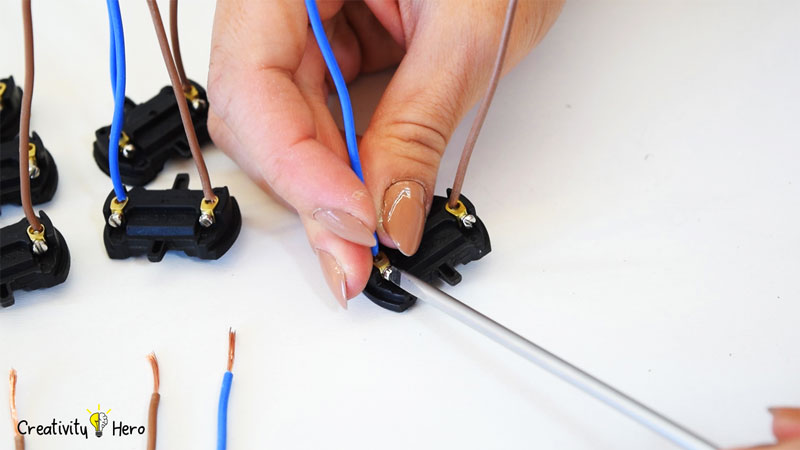
Then, I’ll attach the wires into the socket interior. I’ll tighten the screws with a screwdriver to keep them in place, and then I’ll use an electrical tape to wrap the wires together. I will repeat this steps with all the remaining wires.
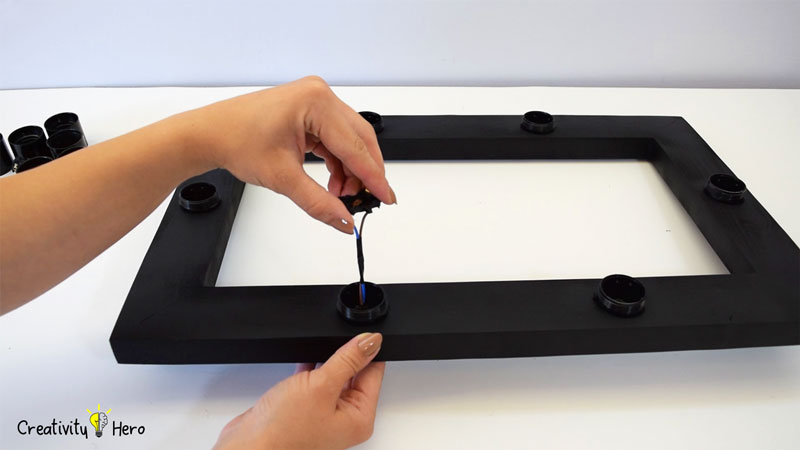
Next, I’ll insert the wires into the drilled holes, and screw on the shells in order to complete the entire sockets.
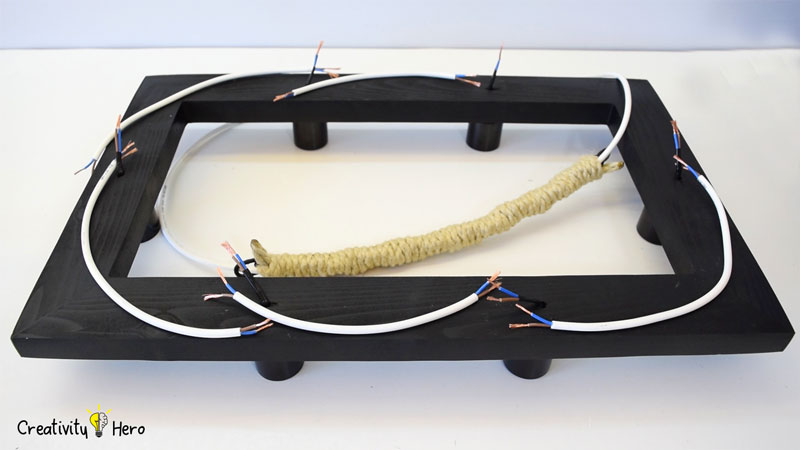
I’ve measured and cut 5 pieces of the cable. The sixth one will be the cable wrapped with the rope. Their length depends on the distance between the sockets. So, I’ve removed 2 cm of the outer jacket, and 1 cm of the wire insulation. As you can see, I joined three wires of the same color together using my thumb and index finger.
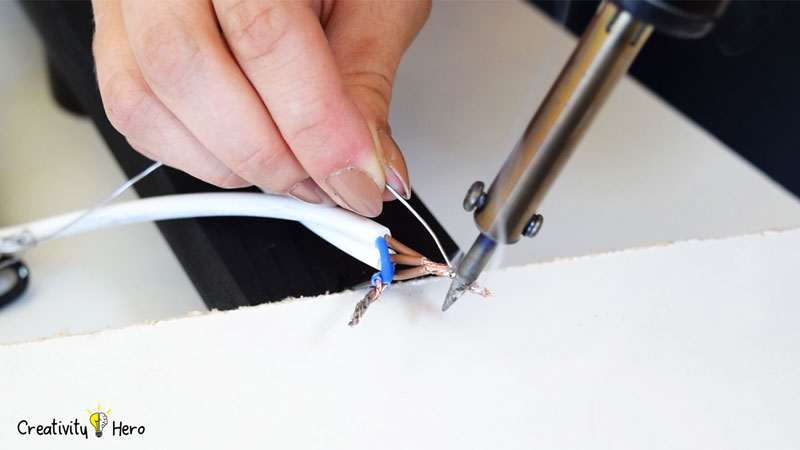
Instead using connectors, I decided to connect them permanently with a soldering iron and a solder. Then, I wrapped them with an electrical tape.
Step 11: Wrapping the cable with an electrical tape and securing it with staples.
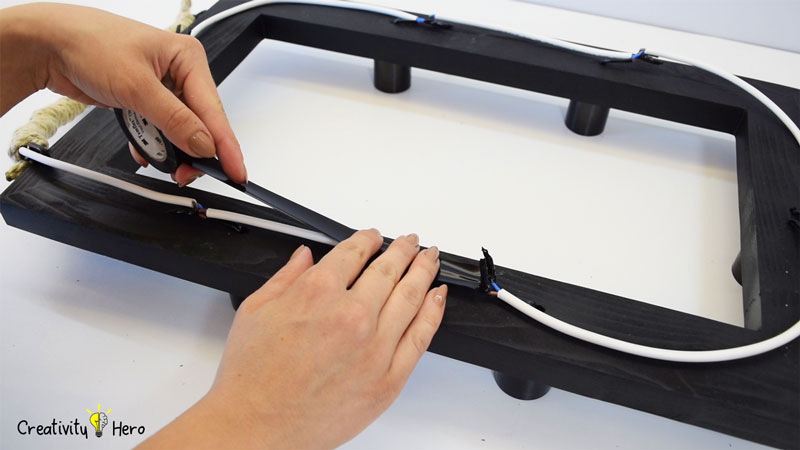
In fact, I figured out that I can wrap the entire cable with an electrical tape, so it would match the color of the wooden frame.
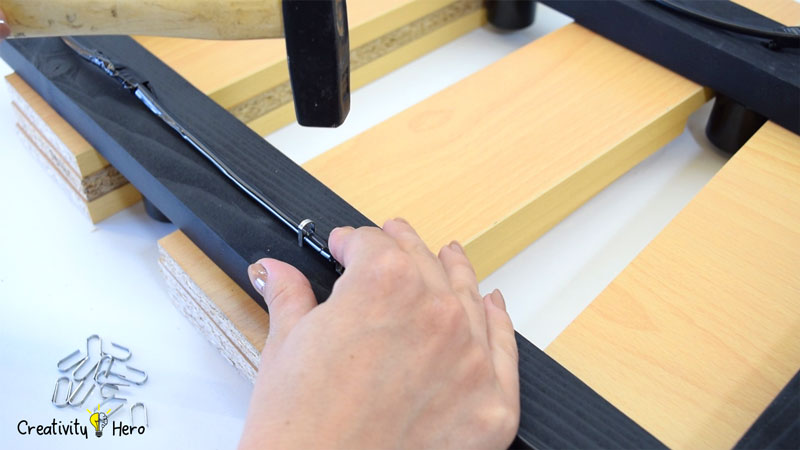
To keep everything in place, I’m securing the cable with staples and a mallet so it won’t pop up and be visible. I’ve nailed two staples on each place, because I wanted to secure them well.
Step 12: Attaching the hooks.
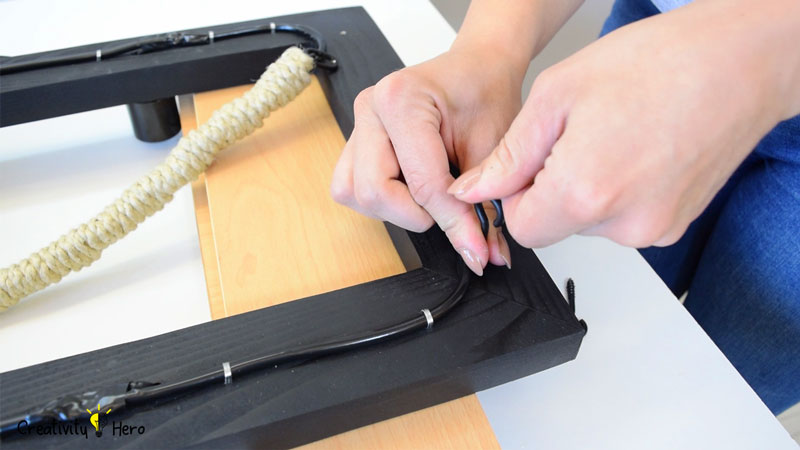
I’ve drilled four holes on the corners of the frame and attached the hooks into place.
Also, I drilled five holes into the small piece of wood, and carefully attached the hooks, because it was really tight fit.
Step 13: Making a junction box.
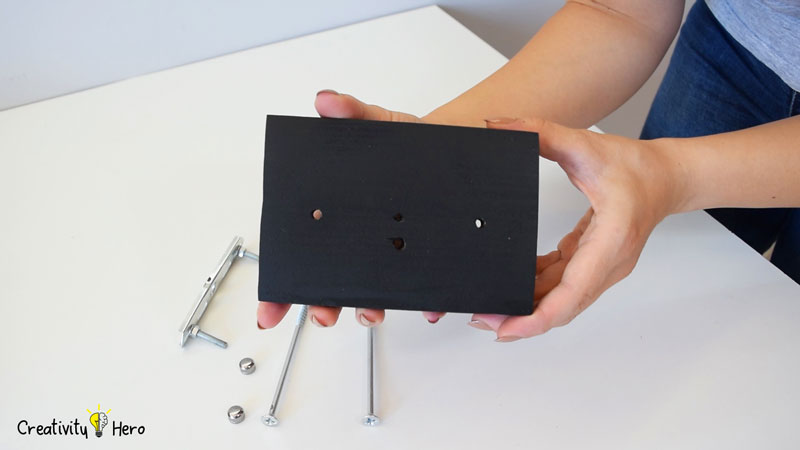
After I drilled the holes into the last piece of wood I realized that I needed to add a wooden frame to it and turn it into a junction box area for the wire connectors, the cable, and the mounting bracket. These holes are made for the screws that will hold it tight to the ceiling, and those in the middle are for the hook and for the cable.
Then I attached the hook in the middle of the junction box.
Step 14: Putting all the parts together.
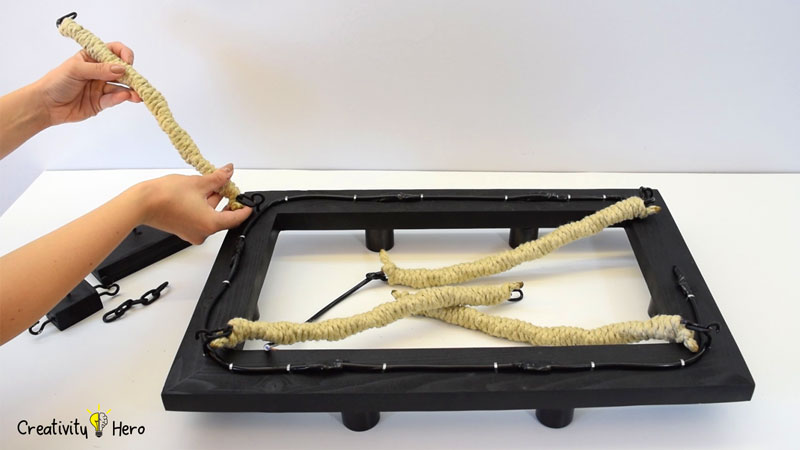
Finally, I can put all the parts of the chandelier together and see if everything is OK. I attached the chains onto the hooks, and pulled the cable through the junction box.
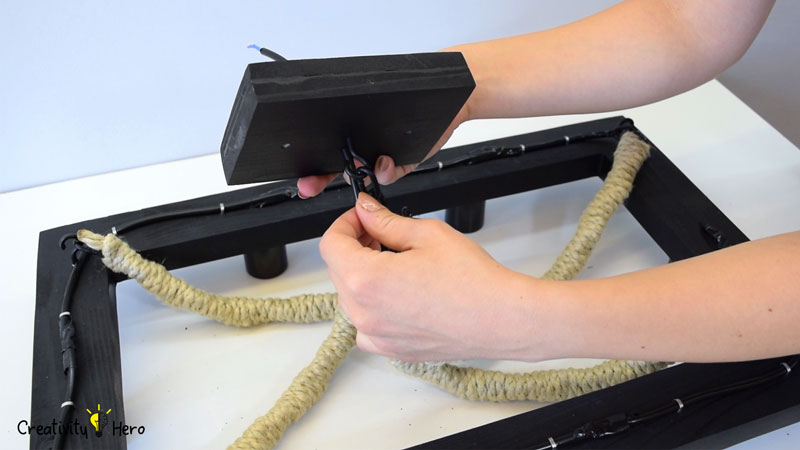 The total length of the chandelier is 55 cm, but you can adjust the dimensions depending on your taste and needs.
The total length of the chandelier is 55 cm, but you can adjust the dimensions depending on your taste and needs.
Step 15: Mounting the chandelier to the ceiling.
Now it is time to mount the chandelier to the ceiling.
Everything needs to be done carefully. If you’re not comfortable doing this, then ask a friend to help you, or hire a professional. I asked my boyfriend to help me, because I didn’t want to make a mistake that could ruin all the work I’ve put into this project.
Remember, the first thing you need to do is to go to the electrical panel and turn off the circuit breaker before installing the light. Use a circuit tester to ensure that the power is off before you touch any of the electrical wiring.
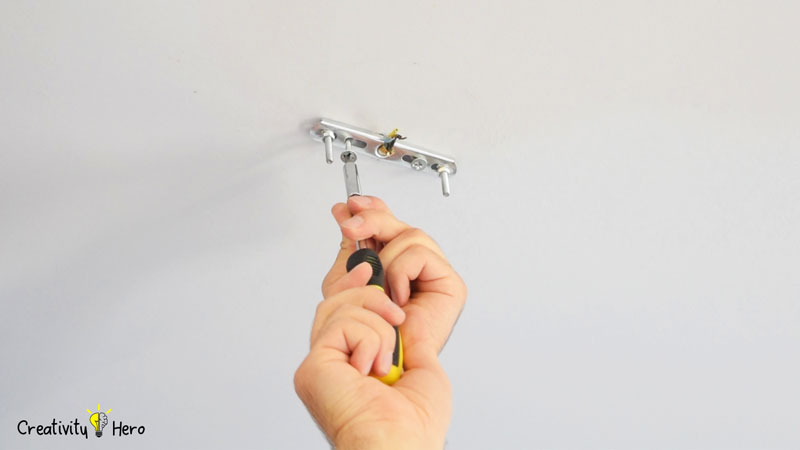
Attach the mounting bracket to the ceiling using provided screws and a screwdriver. Make sure the bracket is snugly attached and rests level.
Three wires are visible: two for power and the third wire is used as an electrical ground.
On my fixture, I also have two wires for the power with the same color. So, I need to connect the wires with connectors. I want to make sure that the blue wire is connected to the blue wire, and the brown wire is connected to the brown wire.
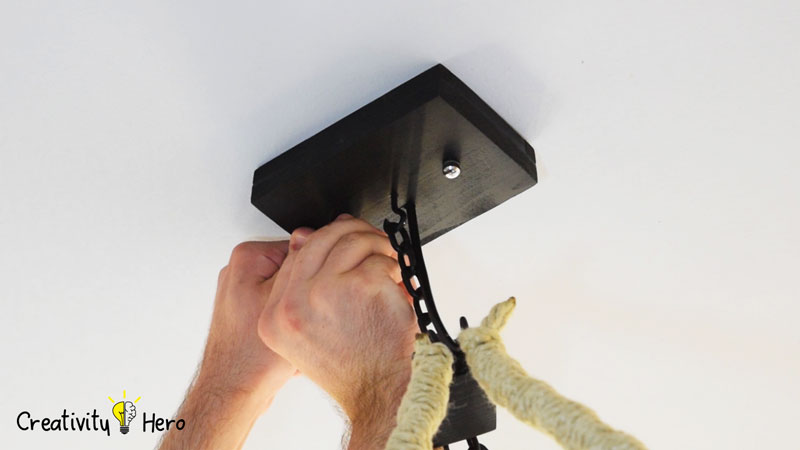
So, once I’m done with that I slide the junction box into place and tighten the other screws that go below the box.
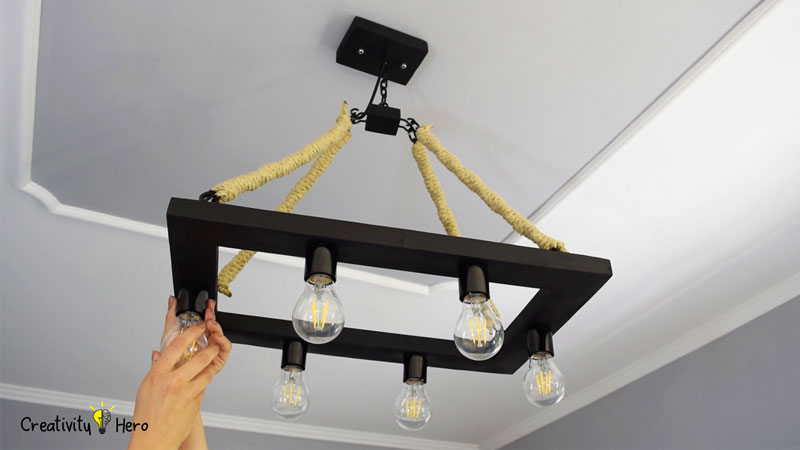
The final thing I need to do is to screw in the light bulbs. I’ve chosen to install LED Vintage Filament light bulbs to fit in its rustic style. And that’s it. Now that I’m done, I’ll turn the power back on, turn my new chandelier on and enjoy the light. I know it will be the center of attention no matter if it’s on or off. I just love it.
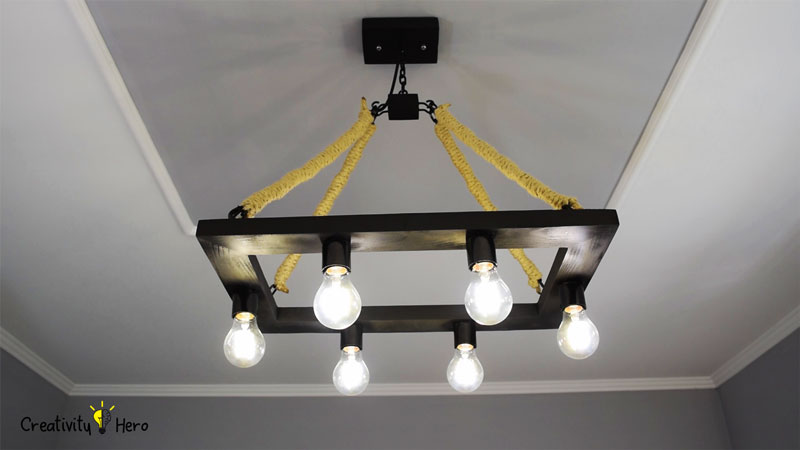
Let me know what you think in the comments down below. Thank you so much for watching and don’t forget to share, like and subscribe to my YouTube channel.




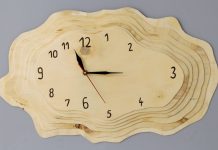

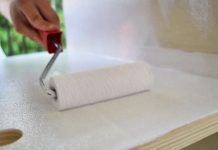




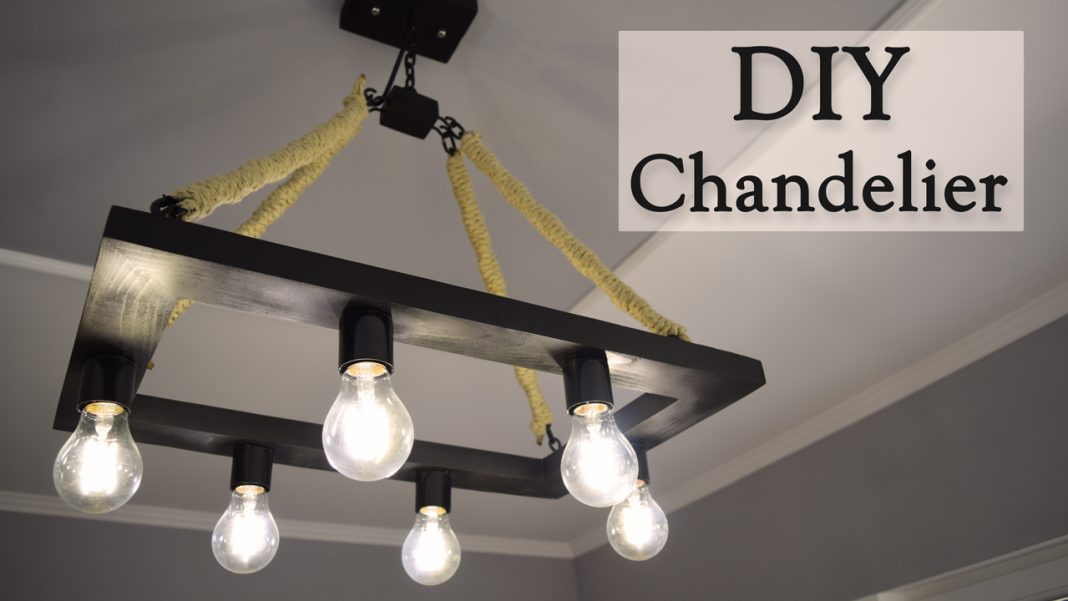

Hi Marija
What a great end result, thank you so much for the inspiration, going to build it for over my dining room table.
Thank you so much! That’s awesome, I’m happy to hear that. I’d like to see your chandelier once you’re done.